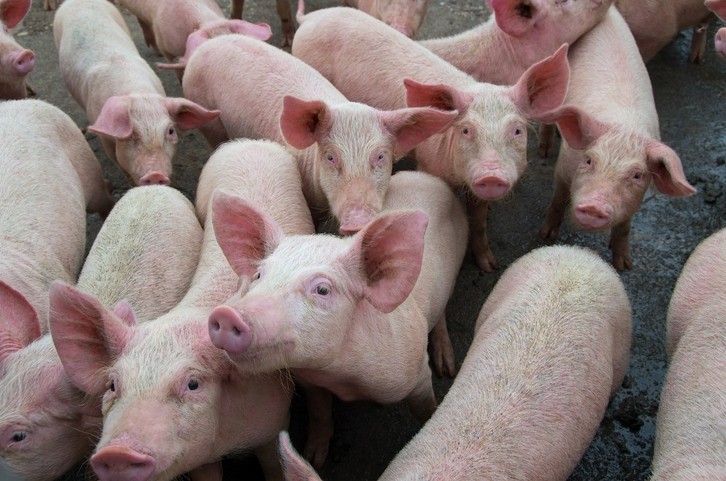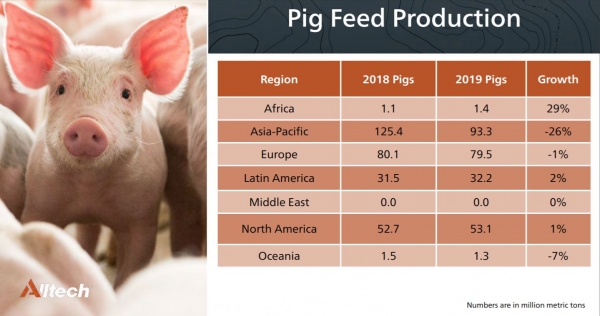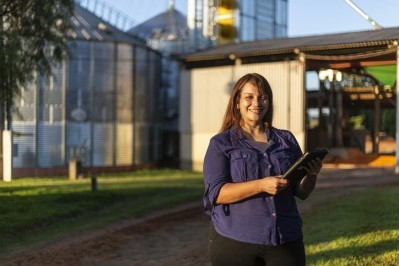China set to have record pork imports in 2020

Policies in China encourage restocking and production expansion, activities that are currently conducted by large companies with better biosecurity and modern farming facilities, noted the analysts.
“As restocking is mainly achieved by keeping gilts, we expect to see a further drop in local production in 2020 [in China], which will reduce overall pork production. This suggests imports will increase in 2020, above record levels.”
African swine fever (ASF) spread to a number of countries in 2019. After hitting China and Vietnam – the two major pork countries in Asia – and Laos, Myanmar, and Cambodia, it made its way to the Philippines, South Korea, and Indonesia in 2H 2019. The impact in many countries, though still significant, is not as big as in China and Vietnam, due to lower hog population density and preparedness for the disease, noted the Rabobank team.
Growth in the US
The US will continue to see production growth in its pork sector this year, according to Rabobank’s pork quarterly, Q1 2020.
Pork production in the US in 2020 is expected to rise 3.2% YOY, driven by modest growth in the breeding herd and improvement in productivity, said the analysts.
“Pork export demand will remain robust, due to expected increasing shipments following the implementation of the trade agreements with China and Japan. However, labor shortages remain a key constraint in 2020, as increases in hog supplies continue to outpace packer capacity – an issue that faster packing line speeds could help to mitigate.”
Hike in exports from Brazil forecast
Like last year, the impact of ASF is expected to raise international demand for Brazilian pork further, predicted Rabobank.
It again sees domestic demand in Brazil continuing to improve on the back of ongoing economic reforms. With feed costs expected to remain reasonable and price levels expected to remain high, margins along the production chain will be well supported in 2020, said the analysts.
“On feed costs, rainfall delays and irregularities are expected to affect the productivity of the next crop, despite projected increases in corn acreage. Thus, production should remain stable, and as demand for grain is even higher than the previous year, feed prices have increased in recent months. Rabobank expects this scenario to persist through 2020. Compared to November 2019, prices have appreciated by 4%, but compared to the same period of 2018, the average price is 2% lower.”
Pig feed trends
According to the Alltech Global Feed Survey 2020, the world's total pig feed production for 2019 saw a decrease of 11%. The primary producing region for pig feed remains Asia-Pacific, but it also experienced the largest decline of 26%, with China (-35%), Cambodia (-22%), Vietnam (-21%) and Thailand (-16%) experiencing large decreases.
Europe, North America and Latin America pig feed output levels remained relatively stable compared to last year, within a percentage point’s worth of gain or loss. While Africa is a small region from a tonnage standpoint for pig feed, it showed a large increase of 29%, reported Alltech.
A focus on European pork production
The European pork industry, however, will see slow production growth, said the pork market specialists.
Following an estimated slight decline in 2019, EU pork production is expected to increase by about 1% in 2020, driven by high prices and strong export demand. However, uncertainties, such as the Brexit trade-deal negotiation, US-China trade tensions, and local ASF risks, will affect EU production and trade.
2020 holds both opportunities and uncertainties for EU pork, said the report.
“Ongoing high prices, supported by firm export demand, will lead to production increases in many countries. We expect EU pork production to increase by about 1% in 2020. On the other hand, the US-China trade deal may pressure EU pork in global trade. In addition, negotiations over the post-Brexit trade deal and the US-EU trade deal add uncertainty.
“ASF remains an ongoing problem for pork production and trade in Europe. Germany is firming up preventive measures, as outbreaks were confirmed in Poland in December, just 21km from the German border.
“On the positive side, Singapore, Vietnam, and India have lifted the ban on pork from Belgium, indicating that some countries are changing their stance on accepting regionalization policy for European pork.”
Pork production in Europe 2019 lagged behind 2018 levels. Up to October 2019, production was down 0.9% YOY, despite strong pig prices. Some of the large pig producing countries, such as Spain, France, the Netherlands, and the UK, expanded production up to October 2019, whereas production in Germany, Poland, Denmark, and Belgium contracted, noted the quarterly.
Production in Germany was constrained by regulatory pressure, whereas Denmark continued to shift focus toward exporting piglets rather than fattening pigs. The declines in Belgium and Poland were ASF related, said Rabobank.
The EU reported its highest 2019 monthly pork exports in October, at 456,000 metric tons, with exports of the first ten months up 17.5% YTD. Exports to China in October were especially strong, at 314,000 metric tons, up 104% YOY, according to the publication.
“At the start of 2020, export demand is likely to soften, following the seasonal pattern, although all eyes are on the shipments to China for the post-Chinese New Year period. Slightly declining carcass prices and flat piglet prices at the end of December suggest at least a temporary break in the recent months’ rising exports.”











